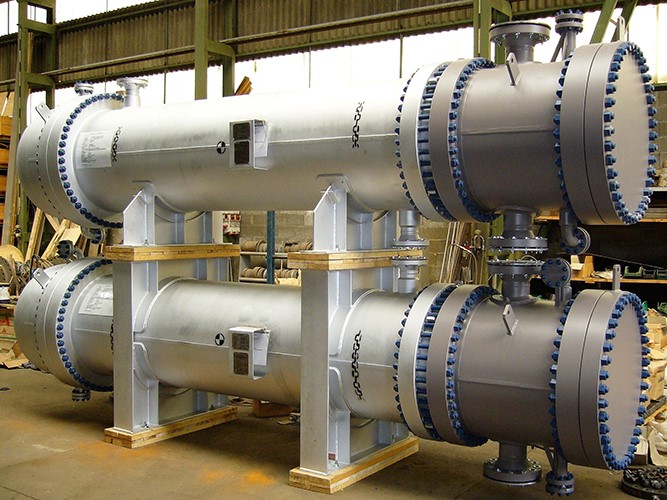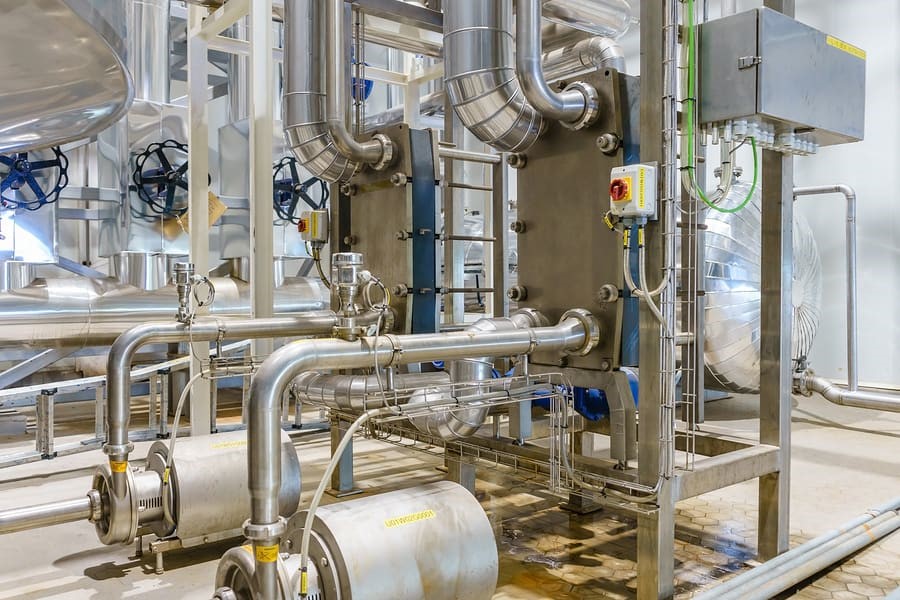
Shell and Tube Heat Exchanger is the most common type of heat exchanger in oil refineries and other large chemical processes, and is suited for higher-pressure applications. Shell Tubes Heat Exchangers are classified into fixed and floating type Heat Exchangers. Shell and tube heat exchangers consist of a series of tubes. One set of these tubes contains the fluid that must be either heated or cooled. The second fluid runs over the tubes that are being heated or cooled so that it can either provide the heat or absorb the heat required. In this type, the tube sheets are completely welded to the shell and acted as shell flanges. Fixed-type Heat Exchangers are used there are absolutely no chances for intermixing of two fluids. The Floating type Heat Exchangers has the advantages of removability of tube bundle and access for cleaning both the inner and outer side of tubes and shell.

Shell Tube Heat Exchanger is widely used in a variety of applications as a cooling solution. Common among them is for cooling of Hydraulic Fluid and oil in engines, transmissions, and hydraulic power packs. With the right combination of materials, they can also be used to cool or heat other mediums, such as swimming pool water or charge air. One of the big advantages of using a shell and tube heat exchanger is that they are often easy to service, particularly with models where a floating tube bundle (where the tube plates are not welded to the outer shell) is available. Can also be used on fixed tube sheet heat exchangers
Types of Heat Exchangers and Applications:-

Even though all heat exchangers perform the same function, there are different types that have varied applications. Learning about these different heat exchangers will help you determine what the right equipment is for your business. Let's take a look at the 4 types of heat exchangers and their applications below:
1 - Double Tube Heat Exchangers:
Double-tube heat exchangers use what is known as a tube within a tube structure. There are two pipes where one is built inside the other. Just like the example above, one fluid flows through the inner pipe while the second fluid flows around the first fluid in the outer pipe. This type of heat exchanger is known for being the most basic and affordable of all. Its size makes it ideal for tight spaces, allowing for some extra flexibility in the layout of the manufacturing process.
2 - Shell and Tube Heat Exchangers:
Out of all the types of heat exchangers, shell and tube heat exchangers are the most versatile. A shell and tube heat exchanger is designed with a number of tubes placed inside a cylindrical shell. The popular design of this type of heat exchanger allows for a wide range of pressures and temperatures. If you need to cool or heat a large number of fluids or gases, the application of the shell and tube heat exchanger is an option to consider. While smaller in size compared to some of the other types, a shell and tube heat exchanger can be easily broken-down, making cleaning and repairs easy.
3 - Tube in Tube Heat Exchangers:
Similar to the other types of heat exchangers, a tube-in-tube heat exchanger is comprised of two tubes, one for each fluid. However, the tubes are coiled together to form an outside and inside pattern. The application for a tube-in-tube design can get fairly creative. Since the tubes are coiled together, most designs for this type are compact. Applications for a tube-in-tube heat exchanger centre on high temperature and high pressure. Since it runs at a higher output, a tube-in-tube heat exchanger tends to have greater efficiency.
4 -Plate Heat Exchangers:
While all of the types of heat exchangers discussed so far have a similar design, the plate heat exchanger is the exception. Metal plates are used to transfer heat between two fluids. The plate is a metal shell, with spaces inside each plate that act as hallways for fluids to travel through. With a plate heat exchanger, there is a greater surface area in contact with the fluids, so it has better rates of heat transfer compared to all other types. Although plate heat exchangers can be more expensive, the efficiency gained by the design is a big plus. This type of heat exchanger is best used in places like power plants because of its durability and low repair rates.
Get A Free Quote For Manufacturing & Fabricating
Contact us at the Industrial nearest to you or submit a business inquiry online.
Contact Us




